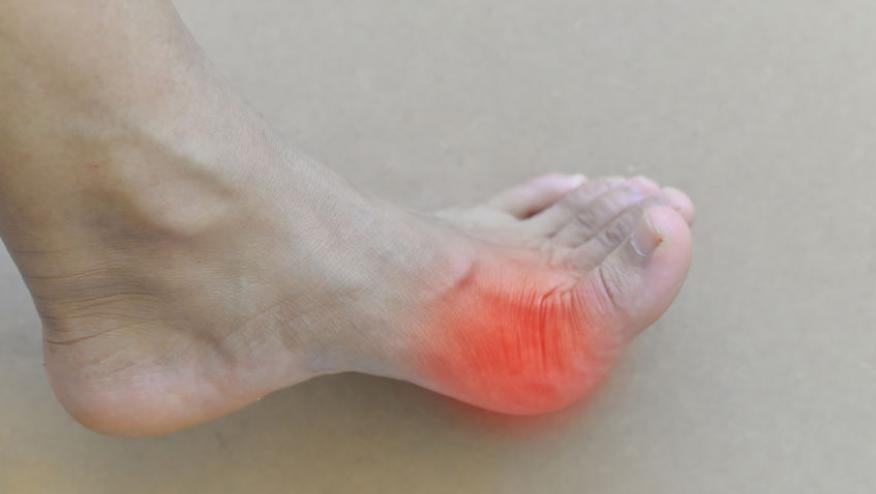Hypersensitivity Reactions and Gout Tx: Watch the Dose Save

Both allopurinol and febuxostat (Uloric) were associated with an increased risk of hypersensitivity reactions among new users of these urate-lowering therapies, a large U.S. study found.
Compared with colchicine, the hazard ratios for hypersensitivity reactions on multivariate analyses were 1.32 (95% CI 1.10-1.60, P=0.003) for allopurinol, 1.54 (95% CI 1.12-2.12, P=0.008) for febuxostat, and 2.17 (95% CI 1.18-3.99, P=0.013) for febuxostat plus colchicine, according to Jasvinder A. Singh, MD, and John D. Cleveland, MD, of the University of Alabama at Birmingham.
In addition, in their propensity-matched analysis, the risk with febuxostat use did not differ from that of allopurinol (HR 1.25, 95% CI 0.93-1.67, P=0.14), the two researchers reported in Annals of the Rheumatic Diseases.
Hypersensitivity reactions to allopurinol are an uncommon but dreaded adverse event that can manifest with rash, eosinophilia, fever, hepatitis, leukocytosis, and possible death.
One recent study from Taiwan found that risk factors for these events included female sex, age over 60, cardiovascular or renal disease, and an initial dosage of allopurinol above 100 mg/day, while another study from New Zealand also identified a high initial dose as a risk factor. In the Taiwan study, the annual incidence of cutaneous reactions to allopurinol was 4.68 per 1,000 incident users.
There have been no studies in European or American populations looking at risks for these reactions, and few data comparing allopurinol versus febuxostat are available.
To address these gaps, Singh and Cleveland turned to the 5% Medicare beneficiary sample for the years 2006 to 2012 in order to identify all individuals with new prescriptions for colchicine, allopurinol, or febuxostat. Colchicine was considered the reference drug, because it has a different mechanism of action than the other two.
The analysis included 39,261 individuals who had 66,178 new prescriptions for one of these drugs, with 1,038 resulting in a hypersensitivity reaction.
Patients' mean age was 77, half were men, three-quarters were white, and the mean Charlson-Romano comorbidity score was 2.6.
Incidence rates of hypersensitivity reactions were 23.9 per 1,000 person-years for allopurinol, 30.5 per 1,000 for febuxostat, and 25.7 per 1,000 for colchicine. Rates were higher among patients using combination therapies, at 56.8 per 1,000 for those taking febuxostat plus colchicine and 89.1 per 1,000 for those on febuxostat plus colchicine plus allopurinol.
The incidence rates also increased when the allopurinol initial dosage was 300 mg/day or higher, and in the early phase of treatment. Within the first 30 days of use, the incidence rates were 73.9 per 1,000 for allopurinol and 60.6 per 1,000 for febuxostat.
"This might represent the time course of hypersensitivity reactions that occur more commonly earlier, or the development of immune tolerance in some other people with time; this requires further study," the authors commented.
In an exploratory analysis, the risks were higher for febuxostat dosages of 40 mg/day compared with allopurinol dosages of 200 mg/day or less (HR 1.43, 95% CI 1.03-1.98).
And in an additional multivariate analysis of allopurinol users only, starting dosages of 300 mg/day were associated with higher risks than with dosages below 200 mg/day (HR 1.27, 95% CI 1.12-1.44).
"Cautious clinicians may start allopurinol at a low dose and gradually escalate the dose to achieve target serum urate to potentially decrease the risk of hypersensitivity reactions and allow patients to achieve target serum uric acid, an important disease target," the authors observed.
In this analysis limited to allopurinol use only, diabetes also was associated with greater risk (HR 1.21, 95% CI 1-1.45, P=0.047), as was female sex (HR 1.28, 95% CI 1.13-1.45, P=0.0001).
"Our findings provide new knowledge regarding hypersensitivity reactions to these commonly used medications for the treatment of gout that can inform clinicians and patients alike starting these medications," the researchers concluded.
A limitation of the study, they said, was its observational design, which could allow residual confounding.
The study was supported by the Division of Rheumatology at the University of Alabama at Birmingham and the Birmingham VA Medical Center.
The authors reported financial relationships with Crealta/Horizon, Medisys, Fidia, UBM, Trio Health, Clinical Care Options, ClearView Healthcare Partners, Putnam Associates, Focus Forward, Navigant Consulting, Spherix, Practice Point Communications, the National Institutes of Health, the American College of Rheumatology, Amarin Pharmaceuticals, and Viking Therapeutics.










If you are a health practitioner, you may Login/Register to comment.
Due to the nature of these comment forums, only health practitioners are allowed to comment at this time.